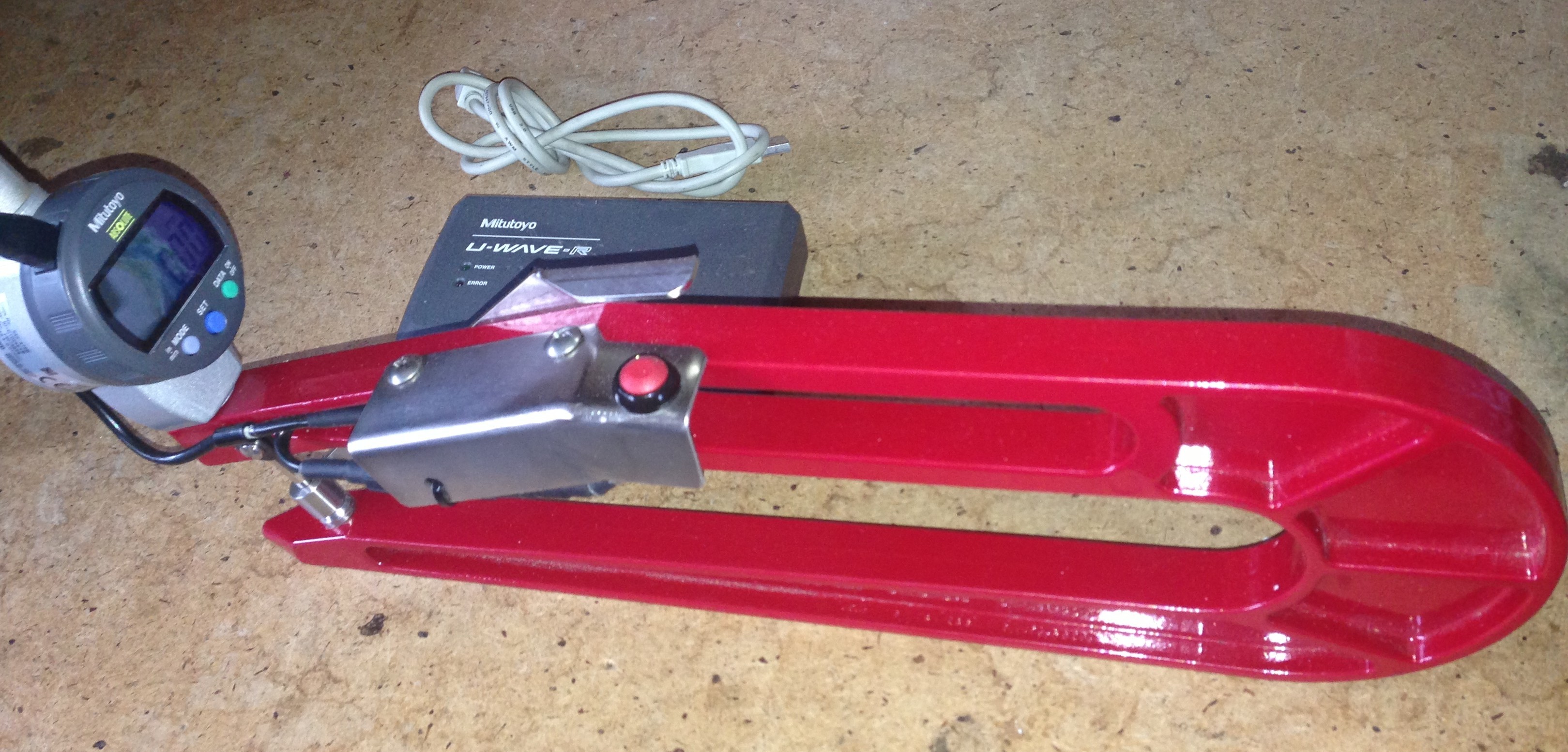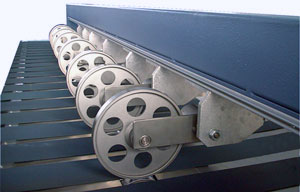The Best Methods for Measuring Leather Thickness
I haven’t been to a tannery that doesn’t measure thickness within their process.
I also haven’t been to any two tanneries that measure thickness the same way.
Thickness is a critical factor in manufacturing leather. Because of this, from beam house through to finished leather, controls should be in place. You can measure with hand tools or a conveyor. Conveyors use mechanical instruments, electronic instruments, or a combination of both. After deciding where and how to measure, it is important to decide what to do with the data. This is where most deviation occurs amongst tanners.
The options are endless – from printing weights on packing lists to complex data manipulation for statistical process control (SPC) purposes. Collecting the thickness data is only half of the equation. It’s what you do with that data that can make all the difference.
Where in the process is it necessary to measure thickness?
OK – that’s pretty easy!
We need to measure thickness after:
- Splitting, both lime and blue, and
- Shaving.
Obvious, right? Both processes use mechanical intervention to alter or level the thickness of the leather. We’ll look closer at “how” later on.
Another area measurement may also be helpful is during sorting. Tanners may sort based on quality, weight, or a combination of both. We don’t need to manipulate the data further if the measurement is accurate. Gathering accurate sort weights will improve quality and reduce waste further down the line. For example, a good weight sort after sammying can improve shaving quality.
Recording the Weights
Every tannery records some weight on their packing slips, labels, or invoices so their customers know the thickness they receive. Some customers (like automotive) are buying specialized leathers with very specific weight requirements.
Be careful! Your customers will likely be measuring thickness on their end as well.

What’s the best way to measure leather thickness?
Operators can take measurements of thickness using a hand tool or an automated measuring device as part of a conveyor system. Both types of measuring devices are used in SPC systems. The goal is to get machine performance results back to the hands of operators. Then they can adjust the machine fast and keep leathers within tolerance. A hand gauge with digital output is most accurate and allows the software to see trends within a few hides. A conveyor system is prone to errors and takes longer to predict accurate trends, but is still an effective alternative.
Hand Measurement vs. Digital Measurement of Leather
Hand measuring is labor intense and costly long-term. An operator takes sample pieces from a production lot and measures at predetermined points. They record the values, then process further later.
A more advanced digital version of the hand tool connects to the company’s computer system for real-time data processing. The main advantage is each that measurement is extremely accurate and the hide is always measured at the same points. This type of measurement is useful after splitting or shaving. Here, operators need exact values to determine the accuracy of the process.
The initial investment is small and the tools need little maintenance. A quality gauge lasts years, but should be checked every three months using standardized gauge blocks and a spring tension analyzer.
Using a measuring machine will allow you to collect more data without extra manpower. Mount the measuring device to an existing conveyor for this. You can also mount it behind a splitting machine or wringing machine where extraction conveyors are typical. In this case it is possible to measure every hide without slowing or stopping production. Since values are digital they can connect to computers for real-time data collection.

The more data you can collect the better off you are, right?
Not always…
The main disadvantage with this type of system is how the hide lies on the conveyor can affect the measurement locations. The hides may not center when transferred and they may have folds or pleats. This skews the data. The best thing to do is correct the data (discarding a certain number of the highest and lowest measurements). This can “soften” the accuracy of the data. This type of measuring is best used to sort a lot of hides, like when sorting for weight after wringing.
Spotting thickness trends is not always as easy as it may be in other industries where the material is more uniform in thickness and density. Leather will compress with varying moisture content or at different parts of the skin. The hide itself may have thin areas below the desired thickness of the process.
The SPC software can detect defects where measurements are taken (such as at a shaving machine). It can also alert of defects at other points in the tannery. In other words, the thickness problem may not be a problem with the shaving machine at all – it could be a wringer or sorting problem, or even an issue with the tannage or drum operations. Without a robust software system to work through the data, you can lose some of the picture you are trying to paint.
Whether hand tools, conveyors systems, or both, it is important to measure and to measure with accuracy. A small number of hand gauge values or a massive amount of conveyor collected data can help your process. More so, it can help if it’s well managed and utilized. Every tannery measures thickness, but only a few control the data to work for them. They capitalize on using it to discover potential clues on where to look for problems. Since most of the effort comes from collection and storage of the data, why is it that so few see it through and maximize the benefits thickness measuring can offer? Take control of your measurement data and start using it to improve your leather processing.


